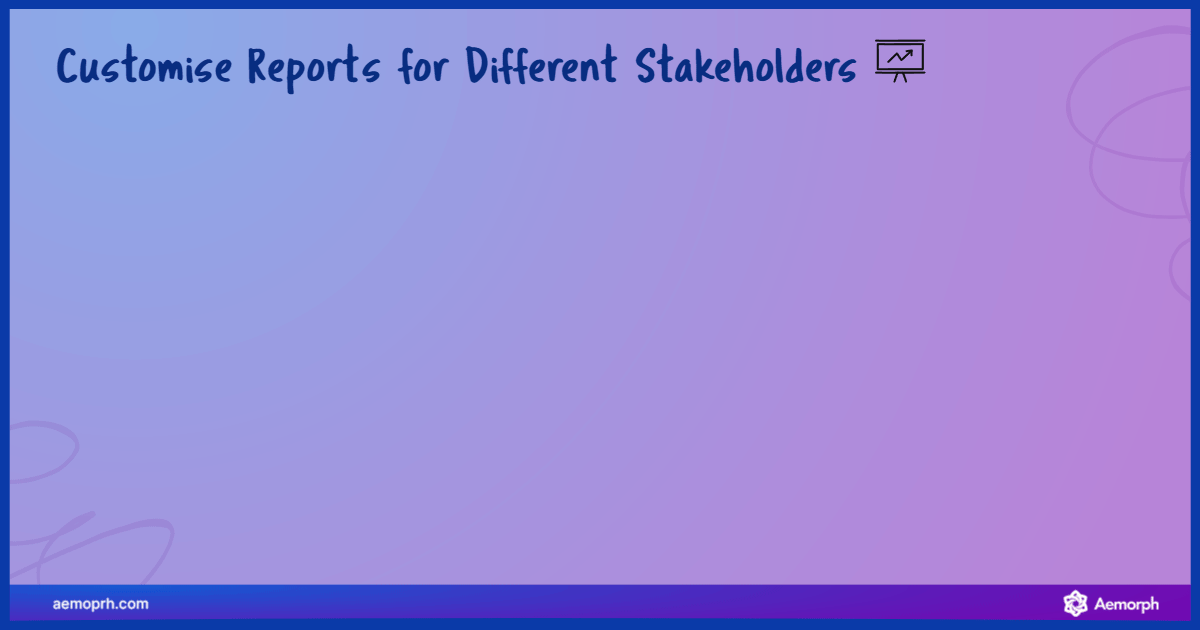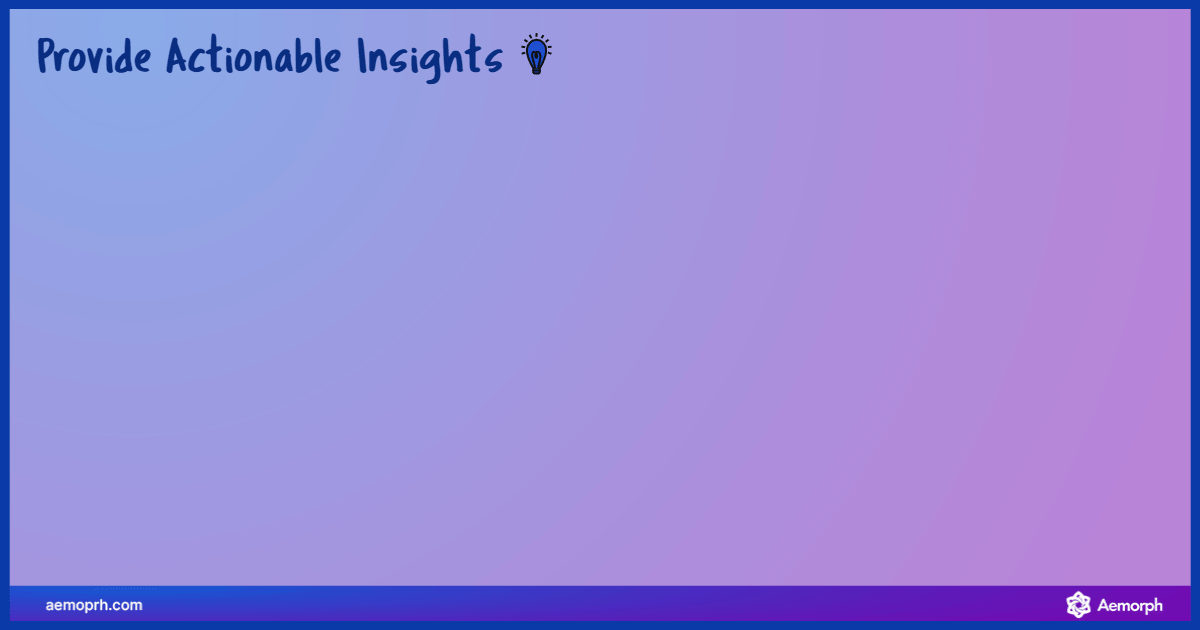
SEO reports are essential for tracking progress and identifying opportunities to optimise your site’s search performance. Without an effective report, it can be challenging for clients and decision-makers to see how SEO drives business outcomes.
To create SEO reports that truly drive value, it’s not enough to simply collect data. It needs to be interpreted to align with your business goals. A well-structured, data-driven SEO report demonstrates progress and provides actionable insights to drive better decisions and refine your SEO strategy.
With this in mind, let’s explore 12 highly effective techniques that ensure your SEO reports are data-driven, actionable, and tailored to stakeholder needs, supported by past projects to demonstrate these methods in action.
Demonstrating SEO ROI

SEO’s return on investment (ROI) can be hard to measure due to its long-term nature. Effective reports connect SEO activities to business outcomes. Clients care about how SEO contributes to their bottom line, so it’s essential to include KPIs that illustrate this connection.
Connecting SEO to ROI involves tracking how organic traffic leads to conversions and revenue. For example, better search visibility typically leads to more traffic, but that alone doesn’t generate revenue. Showing metrics like lead generation, eCommerce transactions, or time spent on high-value content can effectively illustrate the direct relationship between SEO efforts and ROI.
KPIs for Demonstrating ROI include:
- Organic Traffic Growth: Compare month-over-month or year-over-year data to show growth trends.
- Conversion Rate from Organic Traffic: Track how many organic visitors convert into customers or leads.
- Revenue from Organic Traffic: This is a clear ROI metric for eCommerce—showing the monetary value of SEO efforts.
Organic traffic is a leading indicator of SEO success, while conversions and revenue are the lagging indicators that show business value.
Segmenting Organic Traffic

Organic traffic measures how many users land on your website via search engines. It’s one of the clearest indicators of SEO success. It helps you understand how well your website ranks for specific keywords and how these rankings translate into site visits.
However, just looking at overall traffic isn’t enough. You should segment organic traffic by:
- Landing page shows which pages are driving the most visitors from search engines.
- Device (mobile vs. desktop) can highlight whether your site is mobile-friendly.
- Location helps identify where your audience is coming from, which is crucial for local SEO strategies.
A 2021 study by BrightEdge found that 53% of all website traffic comes from organic search, underscoring the critical role of SEO. Therefore, focusing on organic traffic metrics is essential for any SEO report.
Track Keyword Rankings

Keyword rankings are a vital component of SEO reports, as they indicate where your website stands in search engine results for specific terms. Regularly monitoring keyword movements helps you assess the effectiveness of your SEO strategy. While high-volume keywords are important, long-tail and local keywords should not be overlooked, as they often capture specific user intent and lead to higher conversions.
For example, targeting high-intent keywords, such as “buy SEO software,” is especially important because they are closely linked to purchase decisions and are more likely to convert visitors into customers.
A HubSpot case study illustrated the value of long-tail keyword targeting by showing how a website saw a 50% increase in organic traffic within six months after shifting its focus to these keywords. This highlights the importance of balancing broad, competitive keywords and niche, intent-driven ones in your SEO reports.
However, keyword rankings can fluctuate due to several factors, including changes in search algorithms, increased competition, and shifts in user behaviour. While higher rankings generally lead to increased organic traffic, a rise in traffic without corresponding ranking improvements may indicate that your content targets a broader range of search terms than initially planned.
Consistent monitoring ensures your SEO approach aligns with evolving search patterns and user intent. Your SEO report should regularly track these changes to refine strategies and optimise performance accordingly.
Incorporating these insights into your SEO reports can help you make data-driven decisions and refine your keyword strategy to maximise impact.
Monitor Backlink Profile

Backlinks are one of the top-ranking factors in Google’s algorithm. They act as signals to search engines, indicating that your website is credible and authoritative, which in turn helps boost domain authority and improve search rankings. A strong backlink profile boosts domain authority and improves search rankings by showing that other reputable websites trust your site.
When creating SEO reports, it’s essential to emphasise the quality of backlinks rather than just the quantity. Links from authoritative, high-quality sites carry more weight and can significantly impact your website’s rankings. Monitoring your backlink profile regularly allows you to identify valuable links and disavow harmful or low-quality backlinks that could negatively affect your rankings.
Backlink and Keyword Ranking
A robust backlink strategy also positively influences keyword rankings. If rankings suddenly drop, reviewing your backlink profile should be a key part of your analysis to determine whether the loss of critical backlinks may be the cause. These reports help stakeholders understand the relationship between backlink quality and ranking improvements.
Utilise Bounce Rate and Engagement Metrics

Bounce rate is the percentage of visitors who leave after viewing only one page on your site. A high bounce rate may indicate that the page needs to be more relevant to the visitor’s search intent or have a better user experience. This is a key indicator to include in SEO reports as it helps assess how well your content aligns with user intent. This is a key indicator to include in SEO reports as it helps assess how well your content aligns with user intent.
In addition to bounce rate, other engagement metrics like average session duration and pages per session offer insights into how users interact with your website. High engagement suggests that users find the content relevant and the experience enjoyable, which can positively impact SEO performance.
However, high bounce rates and low session durations suggest a mismatch between what users expect and what your landing page delivers. This might mean the content needs improvement or technical issues like page load times hinder user experience. On the other hand, high engagement on pages that don’t convert may indicate a need for better conversion rate optimisation (CRO).
Including engagement metrics like bounce rate, average session duration, and pages per session in your SEO reports is crucial for helping stakeholders understand user behaviour and highlighting areas where improvements can be made.
Leverage Automation Tools for SEO Reporting

Automating SEO reports streamlines tracking and analysing SEO performance, saving time and ensuring data accuracy. Several powerful tools can help automate the reporting process, enabling you to deliver real-time insights that are both comprehensive and actionable.
- Google Analytics: This tool is essential for tracking organic traffic, user behaviour, and conversion data. It allows you to segment data and assess how visitors engage with your site, providing key insights for any SEO report.
- Google Search Console: Tool for monitoring search performance, including keyword rankings, indexing issues, and potential technical errors. It also offers insights into how Google crawls and indexes your site, which is critical for identifying any SEO issues that could impact your visibility.
- Google Data Studio: By integrating Google Analytics and Google Search Console, Google Data Studio creates customisable, visual dashboards that automate your SEO reports. With real-time data updates, you can generate daily, weekly, or monthly reports based on stakeholder needs, ensuring that insights are always current and actionable.
- Third-Party Tools: Tools like Ahrefs, SEMrush, and Moz provide deeper insights into keyword rankings, backlink profiles, and competitor performance. They also offer automated reporting features that allow you to monitor SEO metrics continuously, making manual data collection unnecessary. These tools not only enhance the granularity of your reports but also provide a competitive edge by allowing you to compare your SEO performance against competitors.
Incorporating these tools into your SEO reporting strategy ensures stakeholders receive timely, accurate data that can inform decision-making and optimise your SEO campaigns.
Customise Reports for Different Stakeholders

When creating SEO reports, it’s vital to tailor the data and insights to the specific needs of different teams and stakeholders. Each group in an organisation will prioritise various aspects of SEO, so delivering the right metrics to the right audience ensures that your reports are effective and actionable.
| Stakeholder | Key Focus in SEO Reports | Relevant Metrics | Additional Insights |
| Executives | High-level impact on business outcomes | – ROI – Organic traffic growth- Conversion rates | – Showcase SEO’s contribution to revenue and business goals- Avoid technical details, focus on strategic impact |
| Marketing Teams | Detailed performance metrics to align with campaign strategies | – Keyword rankings- Content performance- Traffic sources | – Provide recommendations for keyword targeting and content updates- Identify gaps in content strategy |
| Sales Teams | SEO’s contribution to lead generation and sales | – Lead generation from organic traffic- Sales conversion rates- Organic search funnel data | – Show how SEO-driven leads convert to sales- Align SEO strategies with sales objectives |
| IT/Technical Teams | Site health and technical SEO issues | – Site speed- Mobile Optimisation- Crawl errors | – Highlight technical issues affecting SEO performance- Offer actionable solutions for improving site health |
| Content Writing Teams | Keyword performance and content relevance | – Engagement rates- Top-performing content- Keyword effectiveness | – Provide content-specific insights like bounce rates and session duration- Help refine content to better align with user intent |
Customising SEO reports for these various teams ensures that each stakeholder gets the insights most relevant to their objectives, allowing better decision-making and alignment with broader company goals.
Visualise Data for Clear Reporting

Visual data helps stakeholders understand trends at a glance. Visual elements such as line graphs for keyword rankings or pie charts for traffic sources help make your reports more digestible.
Tools like Google Data Studio and Tableau allow you to integrate real-time data from sources like Google Analytics and Search Console into interactive dashboards. This automation ensures that your reports are always up-to-date, providing stakeholders with real-time insights that can guide decision-making.
Set the Right Frequency for SEO Reports

Since SEO is a long-term strategy, the reporting frequency should align with the pace of change in your performance metrics and the campaign’s goals. Tailoring the report frequency based on the client’s needs and the nature of the campaign ensures stakeholders are consistently updated without being overwhelmed.
Monthly reports are ideal for ongoing SEO efforts, offering a snapshot of short-term progress. These reports should focus on metrics such as:
- Keyword movements
- Traffic fluctuations
- Content performance
- New backlinks
This regular cadence allows for timely adjustments to the SEO strategy while keeping stakeholders informed about current progress.
Quarterly Reports are more suitable for broader, long-term trends. These reports provide a comprehensive view of how SEO is driving business outcomes. It gives insights into:
- Year-over-year traffic growth
- Keyword ranking stability
- Content performance trends
Tailoring the reporting frequency based on the client’s needs and campaign objectives ensures that SEO reports remain relevant and actionable throughout the project lifecycle.
Avoid Data Overload

Including every metric is tempting, but more data can be needed to ensure stakeholders understand. Prioritise the most critical KPIs such as:
- Organic traffic
- Keyword rankings
- Conversions
- Revenue
These core metrics clearly show SEO performance without causing information overload. For more specialised teams like internal marketing, granular metrics such as bounce rates or average session duration may be relevant, but ensuring the information remains digestible is important.
Provide Actionable Insights

Data alone is insufficient—your SEO report should always include an interpretation of the numbers and provide actionable recommendations. If keyword rankings are dropping, the report should include potential reasons—such as increased competition or outdated content—and suggest improvements. Including actionable insights in your reports becomes a roadmap for stakeholders to improve strategies.
Conclusion
SEO reports are critical for tracking progress, communicating value, and refining strategies. To create impactful reports, focus on key metrics like organic traffic, keyword rankings, and conversions while tailoring the depth of insights to meet the needs of different stakeholders. Ensure your reports are actionable by including specific recommendations for improvement based on data trends. Incorporating visual tools and setting the right report frequency will help stakeholders easily digest insights and make informed decisions.









